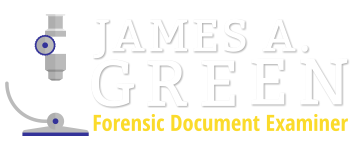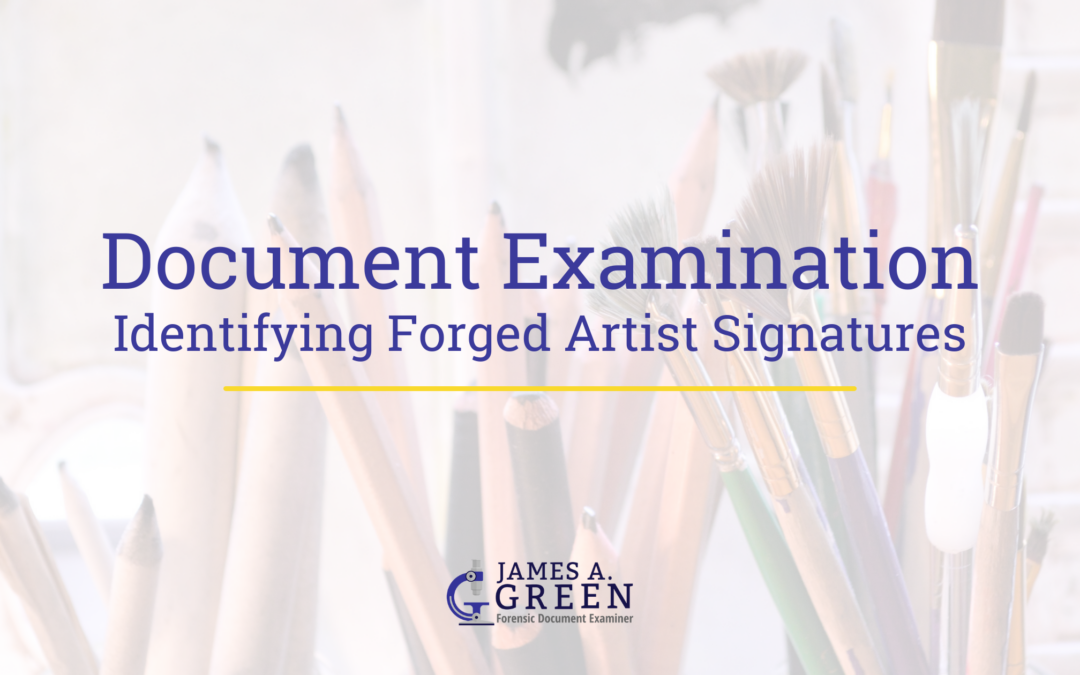Artist signatures are often forged to increase the worth of artwork. This can include paintings, sculptures, and even designs like a wine bottle designed by Andy Warhol. Online art auctions have increased in popularity, making it easier for people to forge signatures – which increases risks. Document Examiners might be called to investigate if the signature is authentic.
A Brief History of Artist Signatures
Artist signatures were first seen in the Renaissance Period. After exiting a long era of artist guilds, individual recognition became popular. Artists began adding signatures to their works so other people could identify the creator. As usage increased, artists added different features like the complexity of the strokes to stand out from their peers – some even incorporated their signature into the work itself! For example, Albrecht Dürer’s signature began as a full signature and morphed into an artistic icon that has been replicated and modified countless times over the years. At this stage in history, there are many thousands of artists’ signatures on paintings, some real, some fake. Either way, iconic looks, and elevated value are the goals.
Signature Identification for Dating & Value Assessment
Artist signatures can help date artwork. For example, Picasso used to sign his work, including his middle name. Over time, he abandoned this middle initial in favor of an artistic signature that featured the initial removed; other artists have gone from signing the front of the canvas to only doing so on the back as time and vice-versa. An examination of a signature on a will, contract, or other paper document would involve a collection of known signature specimens from the same time period. Confirming the signature of an artist on his or her piece of work would logically entail the same process.
Many people are attracted to paintings signed by famous artists because they appreciate the connection to history. Having art authenticated would add an additional cost to the purchase. However, ensuring the item is as advertised, would provide peace of mind.
Signature Forgery on Art; It’s for the Money
The reason people will fabricate signatures on art is apparent. The seller (or occasionally a purchaser,) simply wants to enhance an unsigned piece by adding the artist’s autograph to increase its value. These counterfeits are often sold at auctions and only later realized they were not genuine works.
Roles A Document Examiner Takes On
Many professionals work together in various investigations. Experts in art and art history may work with a document examiner in authenticating works of art. Each expert provides their own knowledge to the investigative process. If testimony is required, the document examiner will likely already have courtroom experience. Providing compelling evidence in an objective manner will be respected by the court. Aside from art, document examiners examine signatures and other writing on documents and other surfaces. (This examiner was recently presented a case involving threatening messages on oranges.)
Final Check
When purchasing a piece of art, you should always find an expert who can verify its authenticity. Hiring a document examiner and art expert for this task could prove advantageous because verifying authenticity could prevent not only disappointment but a significant monetary loss. Caution is merited when considering a major purchase on some auction or social media. Established auction firms and galleries can normally be trusted because they scrutinize their purchases in advance. Feel comfortable with your purchase and enjoy it!

